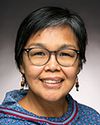Thank you for the invitation to speak to you today as you study this important issue.
My areas of experience on indigenous issues include learning a great deal about the chronic underfunding of essential services to first nations living on reserve, including social assistance and housing, as well as federal funding policies that have seriously contributed to the housing shortages in first nations.
That is not what I am here to speak about this evening, however, though I hope you are looking at these issues as well.
I am not here to focus on the causes of the problem, but rather to highlight a possible part of the solution, at least for Mi’kmaq and Wolastoqey communities in the Maritimes.
I am here to talk about the Dale Sappier, Clark Polchies and Joseph Gray cases that were decided by the Supreme Court of Canada in 2006. In this case the court held that Mi'kmaq and Wolastoqey peoples have the right to harvest timber for domestic use as an aboriginal right. This case has been underutilized and I think it certainly holds promise as part of the solution to the housing shortage in Mi'kmaq and Wolastoqey communities.
To explain the case, Sappier and Polchies, who are Wolastoqiyik from the Woodstock First Nation, cut 16 hardwood logs from Crown lands around the Nashwaak River watershed in New Brunswick. The men planned to use the wood for construction of Polchies' home, specifically to make the hardwood flooring and furniture consisting of tables, beds and cabinets, with any leftovers to be used for community firewood.
Gray, who is Mi'kmaq from the Pabineau First Nation, cut down four birdseye maple logs on Crown lands in the area. He planned to use the wood to make furniture, specifically cabinets, end tables and coffee tables, as well as moulding for his home.
All men were charged under New Brunswick's Crown Lands and Forests Act with unlawful possession of Crown timber from Crown lands.
The Supreme Court of Canada found that these men had an aboriginal right to harvest wood for domestic purposes on their traditional lands. This is because the evidence showed that, pre-contact, both the Mi'kmaq and Wolastoqey people used wood to fulfill their domestic needs, including for shelter, transportation, tools and fuel.
In the modern context, the court said that the practice evolved into a right to harvest wood by modern means to be used in the construction of modern dwellings. To my knowledge, first nations in the region have yet to fully seize on this right to address housing needs, but I suspect this is largely due to a lack of appetite by provincial governments to work with first nations to implement this right. More needs to be done to actualize this right.
Court decisions, by their nature, are very focused. They don't provide all the details that are necessary to be worked out in order to respect and implement inherent rights. The Supreme Court has said that it only lays down minimum standards and it is open for, and the court encourages, governments to go beyond this. There inevitably need to be negotiations, agreements and possibly even legislation to flesh out the right.
I think there is a role for Canada to play here. This could range from supporting communities with capacity and infrastructure dollars to build mills and train community members in the processing of lumber. This might also include legislating in the area. There is potentially a need to lay out parameters around the exercise of this right. Especially if the provinces are unwilling to do so, Canada has the power to do this under section 91(24) even in relation to Crown land in the province.
If the committee wants some further legal and academic sources to draw on in this regard, I would be happy to supply this.
I will end by saying that in whatever capacity Canada decides to act, collaboration with the Mi'kmaq and Wolastoqey, and recognizing their role in the management and stewardship of lumber resources is key. In the Sappier-Gray decision, the Supreme Court stressed that the right to harvest lumber for domestic use is a communal right. This acknowledges a communal management or self-government dimension to this right, not just for exploitation of the resource by individual members but the community managing the use of the resource.
This also aligns with both Mi'kmaq and Wolastoqey people's own laws that emphasize stewardship of the land and sustainable resource practices. In Mi'kmaq this is captured in the concept, Netukulimk.
With that, I will end with wela'lioq to thank the committee for the opportunity to speak with you today.
Thank you.



